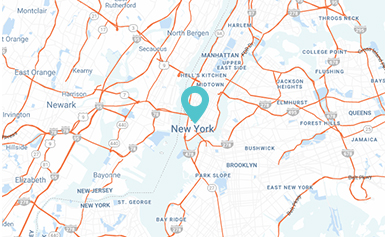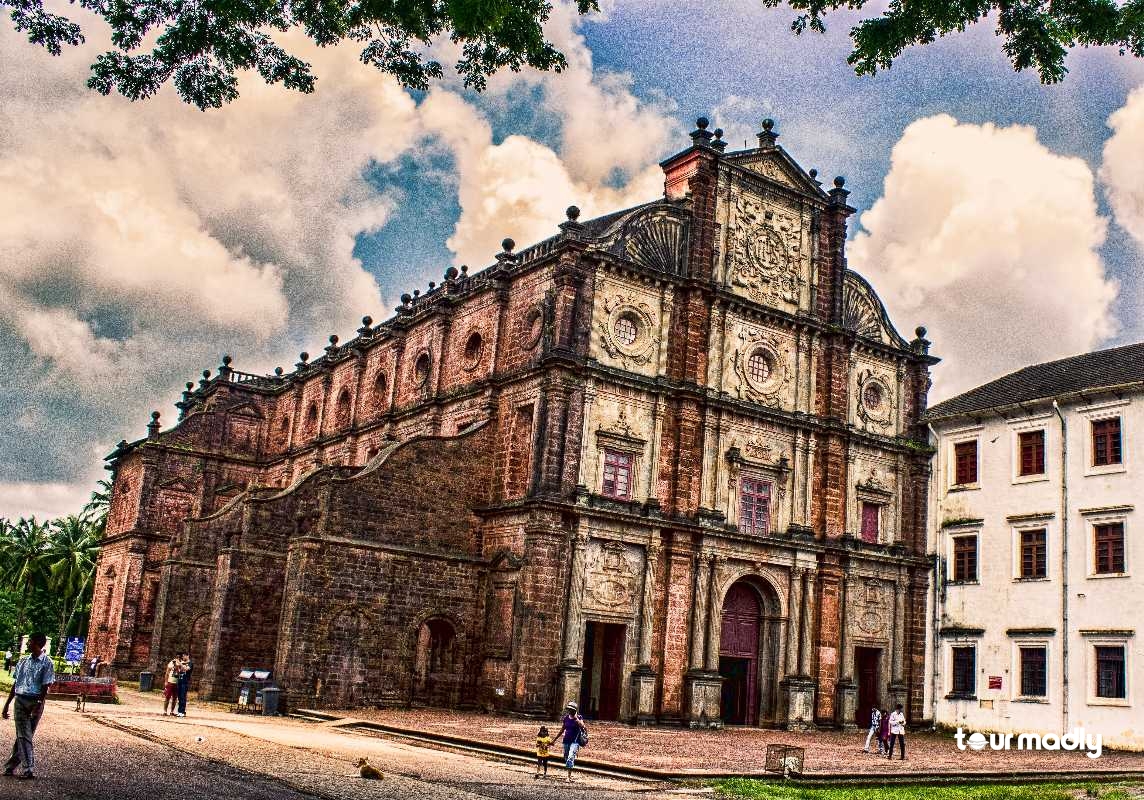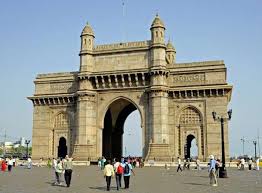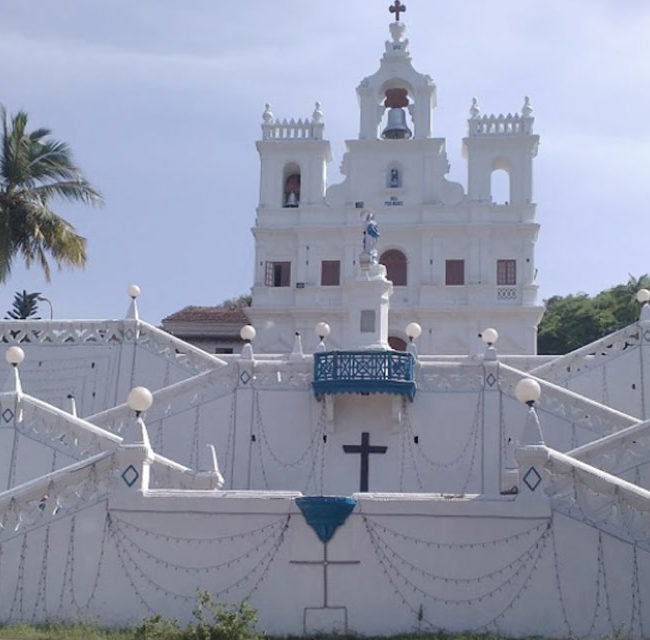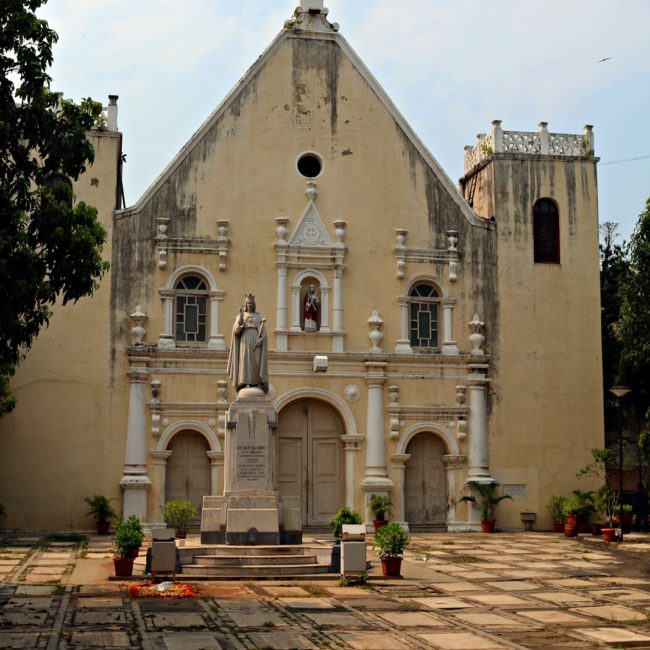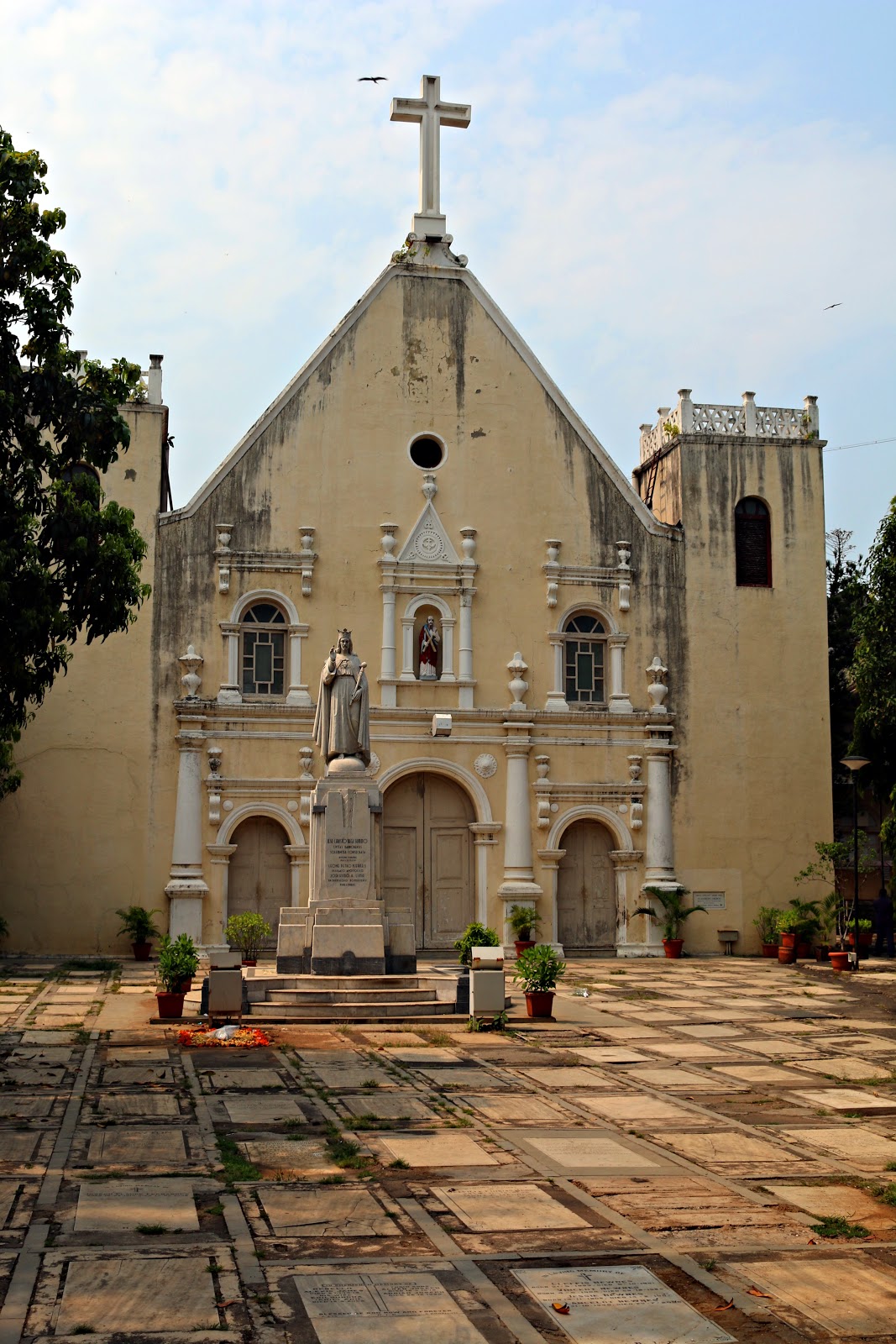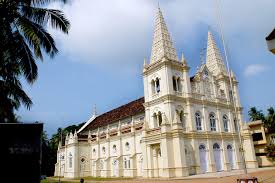Tour Plan
1
Day 01: Arrive Mumbai
Arrive Mumbai. you will be met by our TIME representative at airport, later transfer to the Hotel
Note: Normal check in time at hotel is 1400 hrs.
The area occupied by Mumbai three hundred years ago, was 7 islands inhabited by Koli fisherman and their families. With land reclamation, the islands were connected, so that now Bombay occupies a thin isthmus. The British acquired these marshy islands for a pittance. Mumba devi or Mumbai was part of Catherine of Braganza’s marriage dowry when she married Charles II in 1661. Four years later, the British took possession of the remaining islands and neighboring mainland area and in 1668 the East India Company leased the whole area for 10 pounds per year.
Overnight in Mumbai.
2
Day 02: In Mumbai
Early morning visit Holy Cathedral Colaba for mass which starts at 0630 hrs.
Later proceed to visit the below churches.
St. Andrew's Church is one of the oldest churches in Mumbai, built by the Portuguese Jesuits in 1575. It stands on the sea-shore of the Bandra suburb of Mumbai, and was the only church there till the first quarter of the 17th century. The high altar of the church extends almost to the roof, and carries statues of Sacred Heart, Our Lady and St Andrew. Smaller statues of St John the Baptist, St Sebastian and the Bom Jesu are above the main statues. Circa 1575, the church of St. Andrew was built at the dawn of Christianity in Bombay (Mumbai). For over four centuries, it has withstood the fury of the Monsoons and political upheaval. While even a visitor from the 16th century would instantly recognize this heritage church, it has evolved into a vibrant Parish of the 21st century.
The Basilica of Our Lady of the Mount, more commonly known as Mount Mary Church, is a Roman Catholic Basilica located in Bandra, Mumbai. The basilica stands on a hillock, about 80 metres above sea level overlooking the Arabian Sea. It draws lakhs of devotees and pilgrims annually. Many of the faithful attest to the miraculous powers of the Blessed Virgin Mary. The shrine attracts people from all faiths who pray to Virgin Mary for expressing their gratitude or requesting favours. The church was destroyed in 1738 during a raid by the Marathas.
St. Michael's Church is one of the oldest Catholic churches in Mumbai. The church is situated in Mahim, located at the intersection of L.J. Road and Mahim Causeway. The church was originally built by the Portuguese in 1534. Initially known as San Miguel, it is the oldest Portuguese Franciscan church in Mumbai. It was rebuilt a number of times; the present structure dating to 1973. The church also served as a refuge to the popular icon of the Virgin Mary from Our Lady of the Mount chapel, Bandra from 1739 to 1761.
Cathedral of the Holy Name,Colaba:
Not too far from the Afghan Church in Colaba is a century old Roman Catholic Cathedral of the Holy Name. From the outside, it looks like any other building in the neighborhood with typical Gothic architecture built by the British. The narrow roads and thankfully some trees do not allow the full view of the building from the vicinity. But you can see the elegant building in greystones outlined in white. If you let your neck move around you may be able to see it’s imposing spires. This cathedral has seen quite a bit of history. It was built here to replace a church that used to exist elsewhere. While replacing an Old Portuguese church that once stood very close to this place. Formally it was a church built in the first few years of the 20th century and completed in 1905. It rose to be a cathedral in 1964. And was declared a heritage building in 1998. It is the seat of Archbishop of Bombay.
Overnight in Mumbai.
3
Day 03: Mumbai – Cochin ( Flight)
Early morning visit Holy Cathedral Colaba for mass which starts at 0630 hrs.
Later photo stop at the Gateway of India –an Indo – Sarcenic style of architecture (1927), designed by George Wittet to commemorate the visit of George V and Queen Mary in 1911.
Also visit the Chhatrapati Shivaji Terminus, formerly known as Victoria Terminus Station, in Mumbai, is an outstanding example of Victorian Gothic Revival architecture in India, blended with themes deriving from Indian traditional architecture. The building, designed by the British architect F. W. Stevens, became the symbol of Bombay as the ‘Gothic City’ and the major international mercantile port of India. The terminal was built over 10 years, starting in 1878, according to a High Victorian Gothic design based on late medieval Italian models. Its remarkable stone dome, turrets, pointed arches and eccentric ground plan are close to traditional Indian palace architecture. It is an outstanding example of the meeting of two cultures, as British architects worked with Indian craftsmen to include Indian architectural tradition and idioms thus forging a new style unique to Bombay.
Later in time transfer to airport to board flight to Cochin.
Depart Mumbai at 1705 hrs by flight AI 681 (Air India)
Arrive Cochin at 1915 hrs and then transfer to hotel.
Cochin, originally built by the Portuguese, has a natural harbour with lagoons, canals and fishing hamlets. One of the three biggest ports on the West Coast, it is also an industrially developed area. The coir industry is of special importance. There is golf and swimming for the sporty tourist. An excursion by boat through the backwaters is enchanting.
Overnight in Cochin.
4
Day 04: In Cochin
Early morning visit Catholic church for mass which starts at 0630 hrs.
After breakfast visit St. Francis Church, open from 0900 Hrs to 1300 Hrs & 1430 Hrs to 1730 Hrs (Closed for visitors on Sundays from 0800 Hrs to 1100 Hrs), is the oldest European Church in India. See the Chinese Fishing Nets, along the tip of Fort Cochin unique to this part of Kerala & living symbols of a centuries-old Chinese influence on this coast. The St. Francis Church is one of the most distinguished monuments in Kochi with a history that dates back to the 16th century. Tourists who wish to take a leap into the yesteryears, the St. Francis Church would be a paradise with hidden wonders. The St. Francis Church is located in the heart of Fort Kochi and is one of the most momentous places to visit in Kochi.
The Santa Cruz Cathedral Basilica at Fort Kochi is one of the eight Basilicas in Kerala. Counted as one of the heritage edifices of Kerala, this church is one of the finest and most impressive churches in India and visited by tourists the whole year round. It is a place of devotion as well as a center of historic significance, endowed with architectural and artistic grandeur and colours of the gothic style. It was built originally by the Portuguese and elevated to a Cathedral by Pope Paul IV in 1558, was spared by the Dutch conquerors who destroyed many Catholic buildings. Later the British demolished the structure and João Gomes Ferreira commissioned a new building in 1887. Consecrated in 1905, Santa Cruz was proclaimed a Basilica by Pope John Paul II in 1984.
Afternoon visit Basilica of Our Lady of Vallarpadam. This Basilica which is a national Shrine has a long history. In the year 1524, Portuguese missionaries who came with Vasco Da Gama established a chapel dedicated to th e Holy Spirit with a picture of Blessed Virgin Mary in the form of Our Lady of Ransom. This is the first Church in Asia dedicated to the Holy Spirit. This chapel was washed away in a flood in 1676. The picture of the Lady of Ransom was washed away too. The picture was retrieved from the waters by the Divan of the Maharaja of Cochin - Paliyath Raman Valiyachan, himself a devotee of Our Lady of Ransom.
Overnight in Cochin.
5
Day 05: In Cochin
Early morning visit Catholic church for mass which starts at 0630 hrs.
Later after breakfast excursion to Malayattoor (Approx. 60 kms from Cochin). Malayattoor is a village in the North Eastern corner of Ernakulam District in the state of Kerala in South India. The name ‘Malayattoor’ is an amalgamation of three small words. Mala (Mountain) Arr (River) Oore (Place). This is to say, Malayattoor is a meeting place of mountain, river, and land. Upon arrival visit Malayattoor Kurisumudy Church.
Kurisumudy is a mountain at Maiayattoor, 1269 'Ft. above sea level.Kurisumudy has its fame as a place visited by St. Thomas, one of the Apostles of Jesus Christ. Jesus gave a mandate to his Apostles to go out to the whole world and to proclaim the Good News. Taking upon himself this commandment, Thomas set out to India and landed at Kodungalloor in AD 52. He spent 20 years in India travelled through different parts of this great country of spirituality. He founded seven communities of believers which were Kodungailoor, Palayoor, Kottakavu, Kokkamangalam, Chayal, Kollam, and Niranam.
St. Thomas and Malayattor
Upon his visit to India St. Thomas visited Kurisumudy too. His missionary expeditions took him far and wide and while travelling through the famous caravan route from Kodugalioor to Madras St. Thomas came to Malayattoor. A hostile reception was in store and his life Was danger. He was forced to flee to the top of the mountain and he spent days together in prayer. According to the ‘Ramban Paattu’ , St. Thomas went up the mountain to converse with the Lord. In deep anguish and agony, St. Thomas prayed to the Lord and he made a sign of the cross on the rock. The Mother of Our Lord, Blessed Mary, appeared to console and strengthen him. He descended from the top hill. His zeal for the Lord took him to Mylappoor in Chennai and later died a martyr's death in AD 72. The locals began a practice of lighting an oil lamp and whenever the lamp gave in for the wind, a herd of goats came down wailing and people used to climb the mountain and light the lamp again. Pilgrims, who climb the mountain, even today carry with them seasamum seeds to feed the goats, even though goats are a rare sight.
St. Thomas and Thamizakam
The place of St. Thomas in the life of Tamil believers is something not to be overlooked. Anyone would be moved at the sight of an ardent but the simple faith of a Tamil pilgrim, a usual seen on the mountain. According to Rt. Rev. Dr. Soosa Pakiami the "Archbishop of Trivandrum, "Muthappan" the name by which the devotes invoke St. Thomas on the mountain, may have come from Tamizakam. A good number of pilgrims that visit Kurisumudy and seek Muthappan's blessings is from Tamilnadu. The vital role played by the caravan rout that existed between Kodugalloor and Madras from time in memorial has certainly contributed to this spiritual and cultural bond that exists between Kerala and Tamil Nadu.
Later on, the hunters went to the mountain for hunting. While they stayed in the night, they saw a glittering sign of cross on the rock. Out of curiosity they struck there with their rude weapons. To their surprise blood gushed out. They ran to the valley and told the locals. They went to the mountain and while they prayed thee they got many miracles. This is the humble beginning of Kurisumudy Pilgrimage.
Overnight in Cochin.
6
Day 06: Cochin – Kumarakom (Approx. 80 kms/ 2 hrs drive)
Early morning visit Catholic church for mass which starts at 0630 hrs.
Later drive to Kumarakom.
Kumarakom is a village on Vembanad Lake in the backwaters of Kerala, southern India. It’s laced with canals, where houseboats ply the waters. Kumarakom Bird Sanctuary is home to many species including cuckoos and Siberian storks. Nearby, the Bay Island Driftwood Museum displays wooden sculptures. In the lake, Pathiramanal Island is a haven for rare migratory birds. Ancient Thazhathangady Mosque is east of Kumarakom.
Afternoon excursion to visit St. Alphonsa Church (Approx. 60 kms/ 2hrs drive)
St. Alphonsa Church: Bharananganam, where Blessed Alphonsa lived and died, is a quiet village some 33 k.m. to the east of Kottayam, in south central Kerala. Lying as it does in the cultural hinterland of the erstwhile Travancore State, Bharananganam has a distinctive rural charm about it and has a people who have for generations remained rooted to the soil.
Blessed Alphonsa's Chapel: The crystalline waters of the Meenachil river girdle it on three sides. One of the ancient centres of Christianity in Kerala, Bharananganam is dominated by its millennium old Forane church. The clarist convent where Blessed Alphonsa lived and died is only a stone's throw away from the church; some two hundred metres to the north is the Mortuary Chapel inside which is the Tomb of Blessed Alphonsa. The Alphonsa Museum, which houses hundreds of exhibits associated with the life of blessed Alp honsa, is situated in the Chapel compound. The two-storey structure in front of the chapel was originally the Papal podium at Kottayam during the beatification ceremony on 8th Feb.1986. A flight of steps leads to the stadium below and on either side of these steps one can see a beautifully laid out terraced garden, one of the very best of its kind in Kerala.
Overnight in Kumarakom.
7
Day 07: Kumarakom – Cochin (Approx. 65 kms / 2 hrs drive)
Morning after breakfast drive to Cochin.
Upon arrival check in at hotel.
Afternoon excursion to St. Thomas Church, Kodungalloor (Approx. 60 kms/ 2 hrs drive)
St. Thomas Church, also known as Marthoma Pontifical shrine is a major pilgrim centre located on the banks of the River Periyar in the village of Azhikode in Kerala. It is believed that St. Thomas the Apostle landed in Kodungalloor on November 21st, 52 C.E. Here, he built his first church and spread the message of faith and salvation across the State. The bone of the right arm of St. Thomas was brought from Ortona in Italy and enthroned in the present church. From then on, the shrine at Azhikode has been a great pilgrimage centre attracting thousands from all around the world, irrespective of caste and creed. Today, this site is a prominent pilgrimage centre for Christians around the world.
Overnight in Cochin.
8
Day 08: Cochin – Goa (flight)
Early morning visit Catholic church for mass which starts at 0630 hrs.
Enjoy breakfast in the hotel. Later in time transfer to airport to board flight to Goa.
Depart Cochin at 1530 hrs by flight 6E 528 (Indigo Airlines)
Arrive Bangalore at 1635 hrs and connect flight to Goa.
Depart Bangalore at 1825 hrs by flight 6E 992 (Indigo Airlines)
Arrive Goa at 1945 hrs.
Upon arrival transfer to hotel.
Overnight in Goa.
9
Day 09: In Goa
Early morning visit to Our Lady of Immaculate Church for mass and church visit located at Panjim.
After mass visit St Inez Church, St.Michael’s Church (Taleigao)
St Inez Church: At a distance of 4 km from Panjim Kadamba Bus Stand, 29 km from Vasco Da Gama Railway Station and 17 km from Mapusa, St. Agnes Church is situated in North Goa. St. Agnes Church also known as Santa Inez Church situated in Santa Inez part of Panjim. It was initially a small chapel built in 1584. It was rebuilt in 1605 and one year later it was raised to a parish church by provision dated 27th November 1606. The present Church of Santa Inez was built in 1653. At first the parish was under the charge of the Augustinians. The Augustinians worked in this Parish till 1769. The adjoining parochial residence was once the house of Canon Francisco da Cunha Souto Maior. The Archbishop of Goa lived there from 1795. The new parochial residence was built in 1986. A parish community hall was added on the top floor in 1989.The Church building represents the Mannerist Neo-Roman style of architecture. The church features low domes, three storey towers and rococo. Main altar inside the church has plain paneling and gallery in cornice design. It has twin bell towers.
The St Michael the Archangel Church, Taleigao, Goa is Popularly called ‘The Taleigao Church’ locally in Goa. The Taleigao Church was founded by the Dominican order in Goa in 1544. From 1776, the Taleigao church has been under the charge of the Diocesan Clergy. The Taleigao church was renovated extensively in 1972. The number of Catholics in the Parish of St. Michael the Archangel Church, Taleigao, Goa is 6,500. The Feast of the Patron saint of the Taleigao church is celebrated on the 1st Sunday of October every year.
Lunch break at Miramar.
Visit Old Goa Churches (Basilica of Bom Jesus, Se Cathedral, St.Francis of Assisi & St. Cajetan’s Church.
The Basilica of Bom Jesus is a Roman Catholic basilica located in Goa, India, and is part of the Churches and convents of Goa UNESCO World Heritage Site. This church is perhaps Goa's most famous church and among the most revered by Christians worldwide, is partially in ruins but still a model of simplicity and elegance, and a fine example of Jesuit architecture. This is the only church in Old Goa, which is not plastered on the outside, the lime plaster having been stripped off by a zealous Portuguese conservationist in 1950.
Se Cathedral - One of the most ancient and celebrated religious buildings of Goa, this magnificent 16th century monument to the Roman Catholic rule in Goa under the Portuguese is the largest church in Asia. The Cathedral is dedicated to St. Catherine of Alexandria on whose feast day in 1510 Alfonso Albu querque defeated the Muslim army and took possession of the city of Goa. Hence it is also known as St. Catherine's' Cathedral. The Cathedral was commissioned by the Portuguese Viceroy, Redondo to be "a grandiose church worthy of the wealth, power and fame of the Portuguese who dominated the seas from the Atlantic to the Pacific". The final edifice is bigger than any of the churches in Portugal itself. The construction of this imposing edifice began in 1562 during the reign of King Dom Sebastião (1557-78) and substantially completed by 1619.
The Church of Saint Francis of Assisi is a Roman Catholic Church situated in the main square of Old Goa. The Church and Convent of St. Francis of Assisi were established by eight Portuguese Franciscan friars who landed in Goa in 1517. After their arrival in 1517 with their consistent efforts they constructed a small chapel with three altars and a choir. Eventually in the year 1521 the chapel was modified into a church and dedicated to the Holy Ghost in 1602. Later the church was pulled down and the present church was constructed on the same spot in 1616.
St. Cajetan’s Church - The large and beautiful Church of St. Cajetan, lies about half a kilometer away to the north east of the Se Cathedral, and quite near the ruins of the Viceregal Palace. This church, which is said to have been modelled on the original design of the Basilica of St.Peter in Rome, is architecturally C orinthian both externally and internally while the gilded altars with rich carvings are in rich Baroque style. The Church building itself is built of laterite blocks which are lime plastered.
Overnight in Goa
10
Day 10: Goa – Mumbai (Flight) & Leave Mumbai
Early morning visit to Our Lady of Immaculate Church for mass and church visit located at Panjim.
After mass visit St Alex Church, Calangute
Lunch break at Calangute.
Visit Mae de Deus (Saligao), Saligao seminary, St.Jerome Church (Mapusa)
Later in time transfer to airport to board flight to Mumbai
Depart Goa at 1830 hrs by flight AI 662 (Air India)
Arrive Mumbai at 2010 hrs and connect flight for onward destination.
Tour Location
MUMBAI - COCHIN - KUMARAKOM - COCHIN - GOA
MUMBAI - COCHIN - KUMARAKOM - COCHIN - GOA


